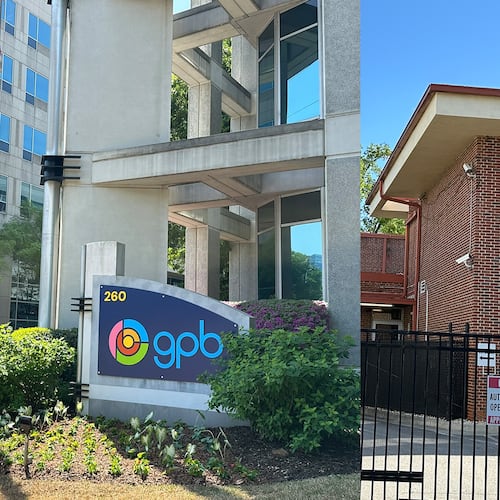Atlanta drivers are not getting the usual autumn discount on gas prices and that hurricane whipping through the Southeast helped insure that they won’t see that seasonal drop anytime soon.
The average price of regular gasoline was $2.85 a gallon in metro Atlanta mid-week, 37 cents higher than the same time a year ago, according to AtlantaGasPrices, a subsidiary of Gas Buddy.
The higher prices are a result of national and global forces that kicked in long before Hurricane Michael appeared, said Patrick DeHaan, GasBuddy’s head of petroleum analysis. There’s “no broad relief in sight, it’s the larger trends pushing us up. They will likely will keep us well higher than what we paid a year ago, sadly.”
Unlike price spikes following past hurricanes, such as Katrina, Rita or Harvey, this one may have battered and flooded the coast but its path meant a less dramatic impact on gasoline supplies and prices.
A powerful storm can shutter or damage refineries, destroy oil rigs, crack or break pipelines and disrupt the delivery of gasoline to storage facilities and gas stations — all factors that drive up prices. It can also interrupt the electric grid that is needed to refine oil and distribute gasoline.
Which means, a storm doesn't just affect price, it can make it hard to find gas at all.
And while Hurricane Michael did come through the Gulf of Mexico, it slashed east of the areas with the clusters of oil rigs and the heaviest concentration of refineries. It did force some refineries to close, but only briefly. And Michael did not break the pipelines.
The upshot was only a modest increase in gas prices.
But the hurricane did compound what was already a trend toward higher-than-expected prices. While nowhere near the all-time highs reached in the aftermath of Hurricane Rita in 2005, gas prices have not taken their usual early autumn drop.
A year ago, gas prices slid from about $2.78 a gallon in September to $2.30 in mid-December.
Gas prices typically drop in the months after the busy summer travel season. This year prices were following that trend, until this month, when Atlanta’s average price jumped about a dime per gallon.
The biggest factor driving the increase is the price of oil, which has been stubbornly high.
In the short-term, prices are set by commodity traders, but they typically react to – and try to anticipate – the ebb and flow of supply and demand.
And the U.S. imposition of sanctions by the Trump administration against Iran, will – if they are effective – take millions of barrels of crude oil off world markets, likely pushing oil prices still higher. That expectation has already moved prices up.
This past week, Saudi Arabia pledged to pump more oil to make up the difference, a promise that Iran dismissed as “nonsense.”
But it’s not just a supply side question.
Demand for oil has been rising in the United States since the end of the 2007-09 recession. The more people working, the more they have reason to drive – and money to pay for gasoline.
There's a range of prices across Georgia. In metro Atlanta, the most expensive county is Fulton, which averaged $2.92 a gallon on Friday, according to AAA. The lowest metro prices were in Gwinnett, which averaged $2.84 a gallon.
Emanuel County in southeast Georgia had the highest reported average in the state Friday: $2.93 a gallon for regular, according to AAA. The state’s lowest average price was in Long County at $2.65 a gallon.
Nowhere near all-time high
Georgia is historically one of the lower-priced states for gasoline, but rising prices often change that.
In most states, drivers pay a tax pegged to each gallon. That means that the tax paid for a full tank doesn’t change as the wholesale price of gasoline rises. In Georgia, some taxes are calculated per gallon.
But in Georgia, where there are municipal and state taxes, sales taxes are also a big part of the mix and since they are based on each dollar spent, the amount of tax increases when the wholesale price rises.
So as wholesale prices rise, Georgia’s prices rise more than other states.
In Georgia, while the average last week was $2.78 per gallon, it was 15 cents lower in Alabama, 16 cents lower in South Carolina, 10 cents lower in Tennessee and 3 cents lower in North Carolina. Florida, however, averaged 4 cents-a-gallon higher than Georgia.
The southeastern states were still lower than the national average of $2.91 per gallon,according to AAA.
Most recessions since World War II have been either triggered or deepened by a spike in energy prices. And while energy costs are not as pivotal to the U.S. economy as they were, they can still take a bit out of growth. Expensive gasoline takes household income away from other spending.
Atlanta is nowhere near the all-time high of $4.17 a gallon hit in 2008, which was one of the factors that turned a mild recession into a disastrous downturn with double-digit unemployment.
Unless global events send oil prices soaring, gas prices are projected to level out and decline toward winter. Then, in the spring, prices typically start to rise again.
Metro Atlanta average, gallon of regular gas
Friday: $2.85
Year ago: $2.48
All-time high: $4.17 (2008)
Sources: AAA, AtlantaGasPrices
How the neighbors look compared to Georgia
Alabama: 15 cents lower
South Carolina: 16 cents lower
Tennessee: 10 cents lower
North Carolina: 3 cents lower
Florida: 4 cents higher
Sources: AAA, Atlanta Gas Prices
About the Author
Keep Reading
The Latest
Featured





